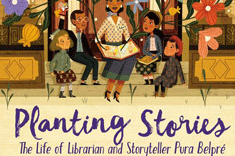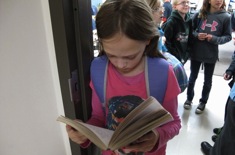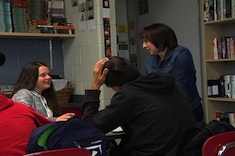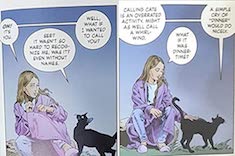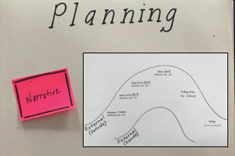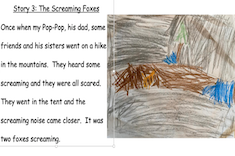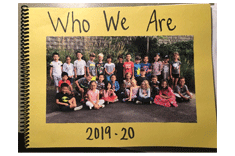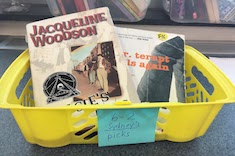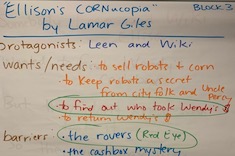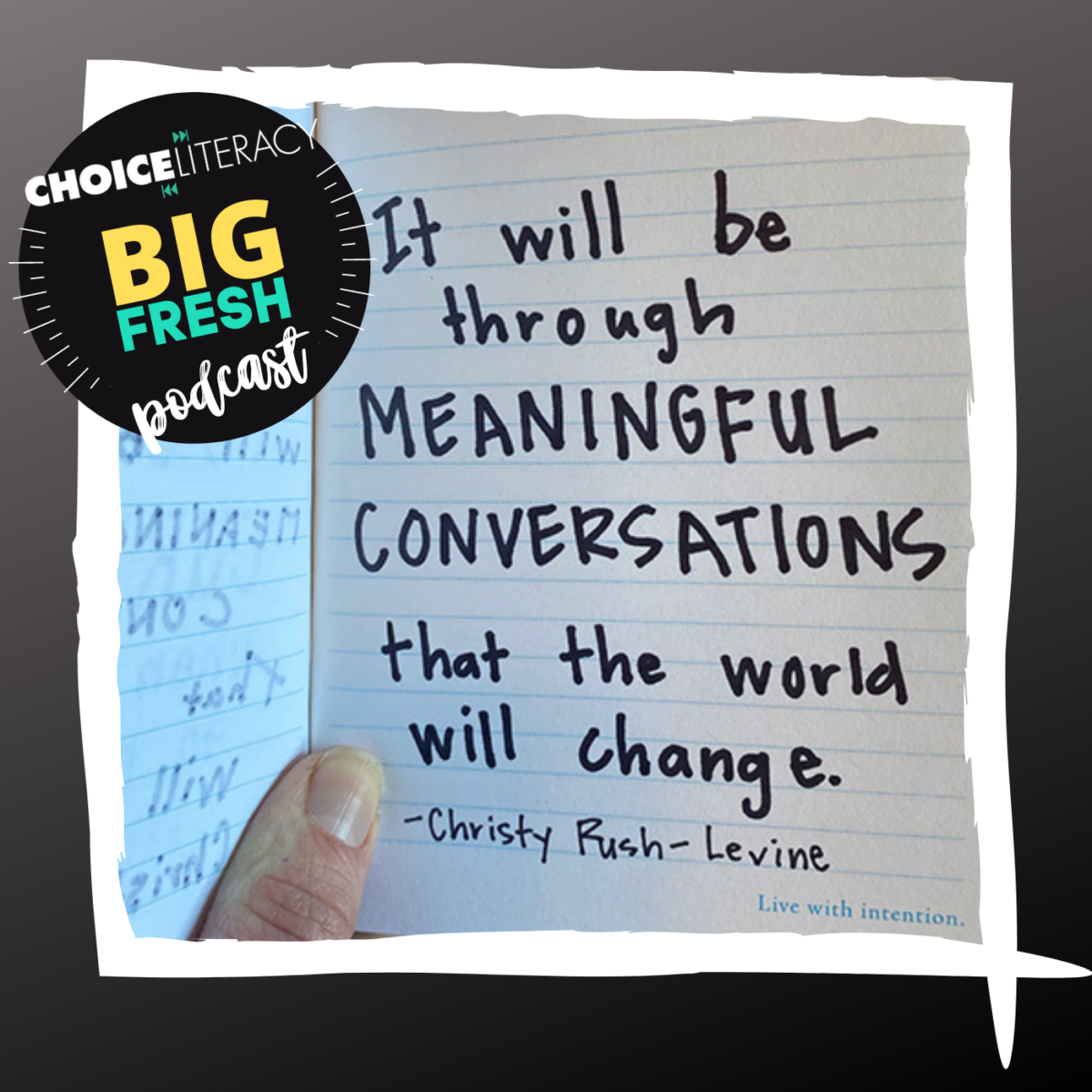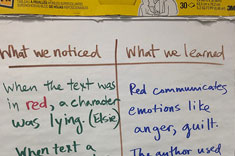Articles
Here is where you’ll find all the latest print features from our contributors. If you’d like to browse specifically by grade level, topic, or contributor, you can use the links in the right sidebar.
Latest Content
Using Shared Writing to Nudge Students Toward Conventional Spelling
Mandy Robek shares the tools she uses to transition students to more conventional spelling.
Building Empathy Through Reading Podcast with Matt Renwick
Matt Renwick discusses empowering readers on the podcast.
Empowering Readers Podcast with Sara Kajder
Sara Kajder discusses empowering readers on the podcast.
Multiple Perspectives Cultivate Empathy
Mark Levine explores ways to cultivate empathy by sharing texts with multiple perspectives on the same event in his middle school social studies class.
Building Informed Empathy with Picture Books
Nawal Qarooni shares three gorgeously varied picture books and guiding questions designed to cultivate an inquisitive stance and informed empathy in students.
When a Library Whispers
Leigh Anne Eck personifies her classroom library by sharing the lessons it whispers when we take the time to listen. This is a practical guide to keeping your classroom library timely and relevant.
Build Reader Identity
Cathy Mere knows that growing skills and strategies readers need is essential, yet helping readers find and grow their identity as readers makes the biggest difference of all.
Nurturing Lifelong Readers
In this beautiful personal essay, Melissa Quimby reminds us to nurture readers through passion conferences, classroom libraries, read-aloud, and independent reading time.
Empowering Readers Podcast with The Choice Literacy Book Club
The Choice Literacy Book Club discusses The Barren Grounds on the podcast.
Importance of Talk in Writing Workshop
Julie Johnson reminds us of important mindsets to adopt to allow students the space and permission to talk while composing. When students talk as writers, they have opportunities to create new understandings, build relationships, and validate each other.
What Do Readers Need?
Christy Rush-Levine offers a close look into the needs of readers by considering engagement, enrichment, and nourishment. She offers three examples of reading conferences with students.
Best Graphic Novel Adaptations for the Middle Grades
Shari Frost shares her favorite graphic novel adaptations for the middle grades.
Celebrating Writers Podcast with Bitsy Parks
Bitsy Parks discusses celebrating writers on the podcast.
Celebrating with Fan Fiction
Melanie Meehan shares how a short dip into fan fiction can be a wonderful way to inject some play and raise engagement in writing.
What Are You Celebrating Today?
Melissa Quimby leans in and asks her students to define their celebrations as writers. Rather than always naming the celebration for students, Melissa helps students gain ownership of the writing process by learning to celebrate every stage.
Shared Writing Podcast with Tammy Mulligan
Tammy Mulligan discusses shared writing on the podcast.
Tips for Creating Shared-Writing Texts Online
Tammy Mulligan offers tips for creating shared-writing texts online.
Class Books Build Readers, Writers, and Community
Bitsy Parks shares the ways in which class books help students work as readers and writers, as well as build a community.
Argument Writing Podcast with Tara Barnett and Kate Mills
Tara Barnett and Kate Mills discuss mentor texts for argument writing on the podcast.
Writing Joy: A Publishing Celebration
Bitsy Parks shares the celebration within the publishing process. Learn to find the joy in uplifting young writers’ approximations by sharing their works with a larger audience.
Four Notebook Pages to Scaffold Persuasive Writing
Ruth Ayres suggests four notebook pages to help students balance facts and emotions when writing persuasively.
Finding Meaning in Reading Podcast with Heather Fisher
Heather Fisher discusses planning for professional learning and finding meaning in reading on the podcast.
Examining Book Choices with Awareness of Bias
Bitsy Parks takes into account her consideration of implicit biases and examines her classroom library and read aloud choices with urgency and excitement.
Recognizing Bias Podcast with Gretchen Schroeder
Gretchen Schroeder discusses recognizing bias on the podcast.
Many Uses for Mentor Texts to Teach Argument Writing
Tara Barnett and Kate Mills share the many targeted ways in which they use mentor texts to teach argument writing and move students away from five-paragraph themes.
Rethinking “Finding” the Central Idea
Leigh Anne Eck offers a step-by-step guide to help students build a central idea when it is implied in a nonfiction text.
Teaching Summary
Christy Rush-Levine faces the challenge of helping her students see summary writing not as drudgery, but as a way to build more sophisticated thinking around texts.
Meaningful Conversations Podcast with Christy Rush-Levine
Christy Rush-Levine discusses meaningful conversations on the podcast.
Meaningful Conversations
Christy Rush-Levine wraps meaningful conversations about race into her curriculum instead of making it “one more thing” to squeeze into the school day.
One Text. One Conversation. Many Possibilities.
Matt Renwick explores ways in which whole-class conversations around one text can build a strong community as understanding is co-constructed.
Browse Content By
Type
Category
- Assessment Tools
- Big Fresh Archives
- Booklists
- Choice Numeracy
- Classroom Design
- Common Core
- Community Building
- Conferring
- Content Literacy
- Digital Literacy
- English Language Learners
- Equity
- Family Relations
- Free Samples
- Guiding Groups
- Leadership
- Literacy Coaches
- Mentor Texts
- Minilessons
- New Teacher Mentors
- Podcasts
- Poetry
- Quote Collections
- Reading Strategies
- Self Care
- Struggling and Striving Learners
- Talking and Listening
- Teacher Study Groups
- Teaching Reading
- Teaching Writing
- Word Study and Vocabulary
Author
- Melissa Quimby
- Nawal Qarooni
- Gwen Blumberg
- Julie Cox
- The Lead Learners
- Hannah Tills
- Josie Stewart
- Ruth Metcalfe
- Mallory Messenger
- Becca Burk
- Jodie Bailey
- Vivian Chen
- Mary Brower
- Tiffany Abbott Fuller
- Stephanie Affinito
- Ruth Ayres
- Leigh Anne Eck
- Heather Fisher
- Shari Frost
- Julie Johnson
- Suzy Kaback
- Gigi McAllister
- Shirl McPhillips
- Melanie Meehan
- Cathy Mere
- Debbie Miller
- Tara Barnett and Kate Mills
- Tammy Mulligan
- Dana Murphy
- Bitsy Parks
- David Pittman
- Brenda Power
- Heather Rader
- Matt Renwick
- Mandy Robek
- Christy Rush-Levine
- Gretchen Schroeder
- Jen Schwanke
- Brian Sepe
- Katherine Sokolowski
- Stella Villalba
- Jennifer Vincent
Grade Level
Choice Literacy Membership
Articles
Get full access to all Choice Literacy article content
Videos
Get full access to all Choice Literacy video content
Courses
Access Choice Literacy course curriculum and training





